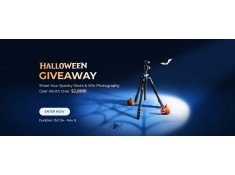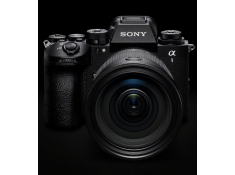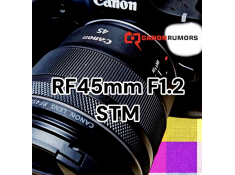Beginner's Guide: What is a Matte Box?
Monday 15 July 2024
 3.2k
3.2k
 Reproduction without the author's authorization is prohibited
Reproduction without the author's authorization is prohibited
If you’re diving into the world of cinematography or advanced photography, you've probably come across the term "matte box." Simply put, a matte box is an accessory that attaches to the end of a camera lens. Its main job is to help you control light, reduce lens flare, and hold various filters that can change the way light enters your lens. Whether you’re a seasoned pro or just starting, a matte box can be a game-changer for your visual storytelling.
What is a Matte Box?
A matte box might look like just another camera gadget, but it plays a crucial role in enhancing your shots. Imagine shooting outside on a sunny day; the last thing you want is unwanted light sneaking into your lens and ruining your shot. This is where a matte box comes in. It uses adjustable flaps called French flags to block stray light and prevent lens flare, ensuring that your footage is clean and vibrant.
Beyond just controlling light, a matte box is also a great tool for holding filters. Filters can transform your footage by adjusting the light before it hits your camera’s sensor. Whether you need a Neutral Density (ND) filter to manage exposure on a bright day or a polarizer to cut down reflections, a matte box makes it easy to swap filters in and out. Plus, it adds an extra layer of protection to your lens, shielding it from dust and potential damage during shoots.
For those venturing into more creative or professional realms, a matte box is invaluable. It allows you to control the look and feel of your footage right at the point of capture. This kind of on-the-spot flexibility can save you hours in post-production, making your workflow more efficient and your final product more polished.
What Does a Matte Box Do?
At its core, a matte box is all about light control. When you’re out filming, especially in unpredictable natural light, the ability to manage how light interacts with your lens can make or break your shot. The adjustable French flags on a matte box let you block out those pesky rays that cause glare and wash out your images. This not only helps maintain color accuracy and contrast but also gives your footage a professional edge.
Another key function of a matte box is its role as a filter holder. Filters are essential for cinematographers and photographers who want to manipulate light creatively. For instance, ND filters reduce the amount of light entering the lens, which is great for achieving a shallow depth of field in bright conditions. Polarizing filters, on the other hand, can enhance skies, reduce reflections, and make colors pop. With a matte box, you can stack and swap these filters effortlessly, giving you the flexibility to adapt to different shooting scenarios on the fly.
Lens protection is another benefit that often gets overlooked. Shooting outdoors can expose your gear to harsh elements like dust, rain, and physical impacts. A matte box acts as a protective barrier, ensuring that your lens stays clean and safe. This not only helps maintain image quality but also extends the lifespan of your expensive lenses. So, in addition to improving your shots, a matte box can be a smart investment in your gear’s longevity.
What is a Clip-On Matte Box?
A clip-on matte box is a streamlined version designed for ease of use and quick setups. Unlike traditional matte boxes that require rod support systems, clip-on versions attach directly to the lens with a clamp mechanism. This makes them ideal for run-and-gun shooting situations where you need to move quickly and adapt to changing conditions without fussing over a complex rig.
One of the biggest advantages of a clip-on matte box is its lightweight and compact design. This is a boon for handheld shooting or when you’re on the move, as it doesn’t add much weight to your camera setup. Despite their smaller size, clip-on matte boxes still provide the essential functions of light control and filter holding, making them a versatile tool for any filmmaker or photographer.
Clip-on matte boxes are also highly portable, which is great if you often find yourself shooting in various locations. They can easily fit into your camera bag without taking up much space, ensuring that you always have the necessary tools to improve your shots. Their quick attachment and detachment feature mean you can switch lenses or adjust your setup rapidly, keeping your workflow smooth and efficient.
Do You Need a Matte Box?
Deciding whether you need a matte box comes down to the type of projects you work on and your specific shooting needs. If you’re striving for professional-quality images and videos, a matte box can be an invaluable addition to your kit. It offers greater control over lighting conditions, which is crucial for achieving that polished, cinematic look that sets your work apart.
For outdoor shoots, a matte box is particularly beneficial. Natural light is often unpredictable, and dealing with harsh sunlight can be a real challenge. A matte box helps manage these conditions by blocking unwanted light and preventing lens flare, resulting in clearer, more controlled images. It’s a must-have for anyone who shoots frequently in varying light conditions and wants consistent, high-quality results.
Using a matte box also adds a layer of protection for your lens, which can be especially important in rough shooting environments. Dust, debris, and potential impacts can damage your lens, affecting both its performance and lifespan. A matte box acts as a barrier, keeping your lens safe and ensuring your gear remains in top condition. If you value your equipment and the quality of your work, investing in a matte box is a smart move.
What is a Good Matte Box?
When it comes to choosing a good matte box, there are a few key features to consider. First and foremost is build quality. You want a matte box that’s durable and built to last, preferably made from materials like aluminum or carbon fiber. This ensures it can withstand the rigors of professional use while remaining lightweight enough for easy handling.
Compatibility is another important factor. Make sure the matte box can fit your camera and lenses. Many matte boxes come with adjustable clamps or universal mounts, allowing them to be used with various lens sizes. This flexibility is essential for filmmakers who use multiple lenses during a shoot. Additionally, consider the filter capacity of the matte box. Look for one that can hold multiple filters, giving you more creative options on set.
Ease of use is crucial, too. A good matte box should be straightforward to attach and detach, allowing for quick adjustments during a shoot. Clip-on matte boxes are excellent for their convenience, especially in fast-paced shooting environments. Rod-mounted matte boxes, while more stable, might be better suited for more complex setups. Lastly, consider the portability of the matte box. If you’re often on the move, a compact and lightweight option will be more practical and easier to transport.
Conclusion
A matte box is an essential tool for anyone serious about cinematography or advanced photography. It helps control light, reduces lens flare, holds filters, and protects your lens, all of which contribute to better image quality and greater creative control. Whether you go for a clip-on version for its ease and portability or a more robust rod-mounted matte box for stability, investing in a matte box can significantly enhance your visual storytelling. By choosing the right matte box for your needs, you can elevate your work and achieve professional-quality results, making it a worthwhile addition to your camera gear.
Statement: all contents and remarks made by K&F CONCEPT 's intranet friends only represent themselves and do not reflect any K&F CONCEPT 's opinions and views.
-
 Canon EOS R7 Mark II Camera to be Released in 2026Friday 24 October 2025
Canon EOS R7 Mark II Camera to be Released in 2026Friday 24 October 2025 -
 Sony is about to release the A1M2a camera, featuring a minor screen upgradeThursday 23 October 2025
Sony is about to release the A1M2a camera, featuring a minor screen upgradeThursday 23 October 2025 -
 Canon RF 45mm F1.2 STM full-frame lens is about to be releasedWednesday 22 October 2025
Canon RF 45mm F1.2 STM full-frame lens is about to be releasedWednesday 22 October 2025 -
 Tamron 25-200mm f/2.8-5.6G2 full-frame lens is now availableTuesday 21 October 2025
Tamron 25-200mm f/2.8-5.6G2 full-frame lens is now availableTuesday 21 October 2025 -
 Fujifilm confirms release of new X-series products on October 23rdTuesday 21 October 2025
Fujifilm confirms release of new X-series products on October 23rdTuesday 21 October 2025






